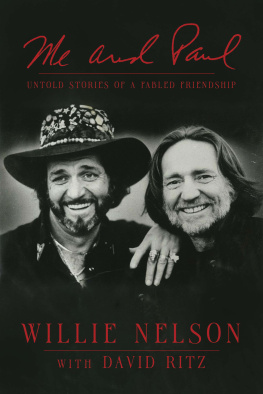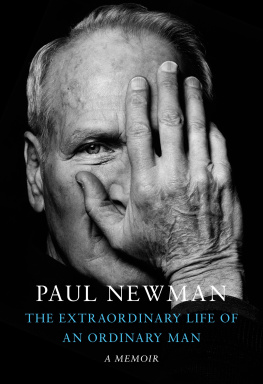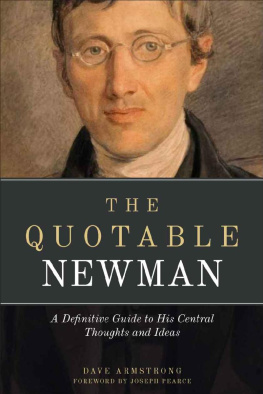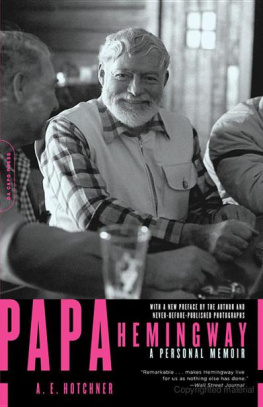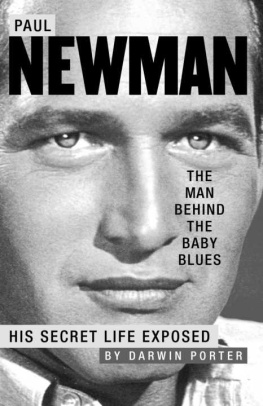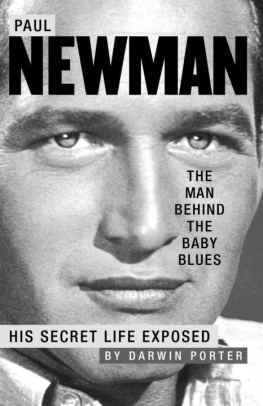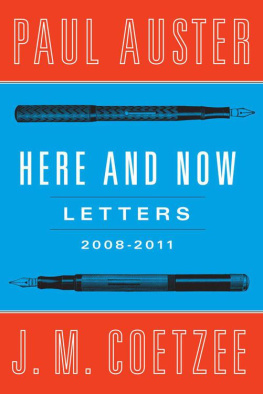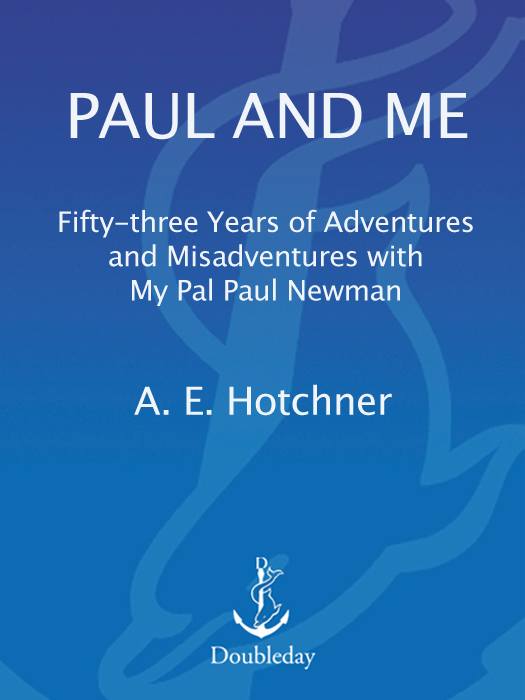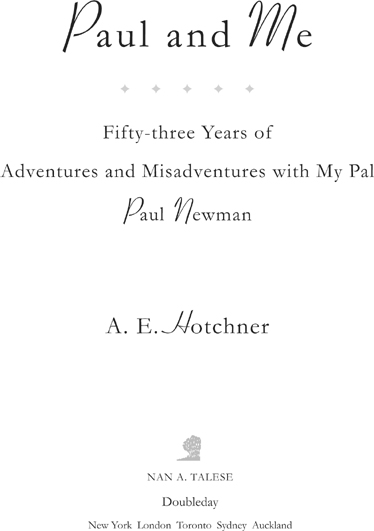Also by A. E. Hotchner
NONFICTION
Papa Hemingway: A Personal Memoir
King of the Hill: A Memoir
Looking for Miracles: A Memoir About Loving
Doris Day: Her Own Story
Sophia: Living and Loving
Choice People
After the Storm
Hemingway and His World
Blown Away: The Rolling Stones and the Sixties
The Day I Fired Alan Ladd and Other World War II Adventures
Everyone Comes to Elaines
with Paul Newman
Newmans Own Cookbook
The Hole in the Wall Gang Cookbook
Shameless Exploitation in Pursuit of the Common Good
FICTION
The Dangerous American
Treasure
The Man Who Lived at the Ritz
Louisiana Purchase
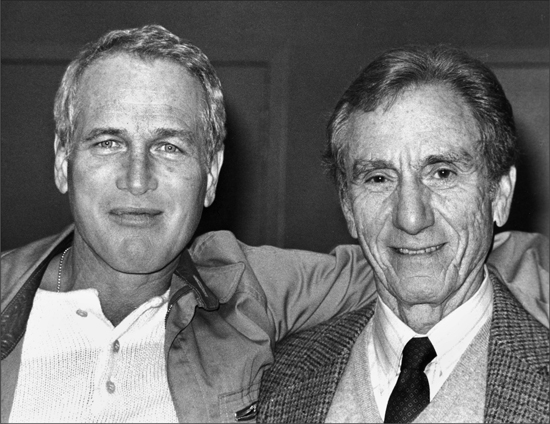
For Paul
NOTE TO THE READER
Some of the fifty-three years of our friendship was involved in starting Newmans Own and the Hole in the Wall Gang camps, and I have recounted that in this memoir.
Several years ago, Paul and I wrote a slim business book called Shameless Exploitation in Pursuit of the Common Good, which turned out to be one of our major misadventures. To those few who happened to have read it, I hope they will indulge the passages that have found their way into this book in the context of our friendship.
A.E.H.
Up Front
Paul Newman was an unadorned man. He was direct and honest and off-center and mischievous and romantic and very handsome. All of these attributes became the generating force behind him. He was the same man in 2008 that he was in 1955, unchanged despite all the honors and the fame, not a whisper of a change. That was somethingthe constancy of the man.
In these bleak times that feature men whose greed and selfishness have been so disillusioning and ruinous to their fellow citizens, Pauls concern for those less fortunate and his altruistic mien were important antidotes.
He was a complicated, unpredictable, talented man who certainly gave back to the world as much as the world gave to him.
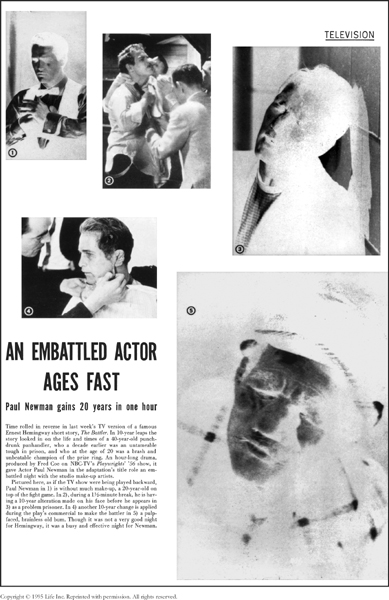
P aul Newman and I first met in 1955 in a funeral parlor on La Cienega Boulevard in Hollywood. There were sample coffins in the anteroom, but the large viewing room beyond had been stripped of its funereal paraphernalia and instead outfitted for the rehearsal of The Battler, a television drama I had written based on a Hemingway short story. It was my first television play and, as it turned out, it became a fortuitous launching pad for Pauls career as well as my own. We were in this mortuary because NBC had run out of rehearsal space, and this bizarre spot was the best they could do.
Both Paul and I were at the start of our respective careers and each of us had come to a halt. Paul had been brought up in Shaker Heights, an affluent suburb of Cleveland. He had been in a dozen or so plays at Kenyon College, and after graduation he had performed in summer stockonce playing the gentleman caller in Tennessee Williamss The Glass Menagerie. He later enrolled in Yale University School of Drama, where in Shaws Saint Joan he was required to weep onstage. As Paul told me years later, The muscles contracted in my stomach, and immediately I tried to figure out some way to play the whole thing facing upstage. And then I thought, What an ass. I drag my familyI had married an actress I had met when I was in Woodstock summer theater and had a son with herwith only nine hundred dollars in the bank, all the way to Connecticut, and then think of all the ways I can cop out. At the time I was living in a boardinghouse, and I took that script downstairs to the boiler room and I said, Okay buddy, you are going to sit here until you find out where it is going to come from or you get out of this business right now. I did the part and my tears arrived on cue.
After Yale he was accepted by the Actors Studio. Marlon Brando and James Dean were in his session, and they were given the leads in most of the scenes that were performed. Paul admitted he did not have the aggression that one needs to get noticed and also was terrible at sight-reading a new script. He and Dean performed together in a screen test for a part in East of Eden, and Dean got the part.
Paul picked up small parts in TV dramas that were being filmed in New York, and he landed a small part in Picnic on Broadway and was also the understudy to Ralph Meeker, who played the lead. Later in the run, when Meeker went on vacation, Newman asked the director, Josh Logan, if he could take Meekers role when the play went on the road. But Logan told him no; he didnt think Paul carried enough sexual threat.
As for me, I had come from the rough streets of Depression-era St. Louis, and had made my way through Washington University Law School and the air force. Rejecting the banality of lawyering, I had opted for freelance writing and was attempting to liberate myself from the dead end of magazine work. Years before, in 1948, I had visited Ernest Hemingway at his finca in Cuba to edit his novel Across the River and into the Trees for magazine serialization. At that time Hemingway was being pursued by television producers. Hordes from the north, he said. They sweep down like Huns with their deals and residuals. He felt under siege and, because I was from New York and he assumed I understood that world, he asked me if I would be willing to screen the dross from the brass. I told him I would do what I could, but that I had never written for television and knew nothing about it. That puts you a jump ahead of all those network geniuses who think they do, he replied.
This eventually led to my converting Hemingways brief story The Battler into a television play. Fred Coe, the veteran producer, had cast an actor named Paul Newman to play a supporting role. Paul had recently appeared on Broadway as one of the hoods in The Desperate Hours and had acted in one film, The Silver Chalice, which had been a fiasco. When Coe asked him about The Silver Chalice, Paul blamed his agent, who had told him, Theyve been knocking and knocking on your door, offering you scripts, but at some point theyre just going to stop. And the trick is to answer the last knock before they quit. So when this awful script arrived, his agent said, This may be the last knock, so Paul accepted. He said it was without a doubt, the worst film made in the entire decade of the fifties.
The role Paul was to play in The Battler was that of Nick Adams, a teenager who runs away from home and encounters an addle-brained, psychopathic former boxing champ at a campsite alongside a railroad track. Although Paul was thirty-one years old, he had a youthfulness that allowed him to play much younger.
No sooner had the set builders and costume designers started work on The Battler than we got the tragic news that James Dean, who was to play Ad Francis, the battler, had died in an accident involving his souped-up sports car. Now, with rehearsals imminent, we were without a leading actor in this long and difficult part that called for a punch-drunk, dangerously unbalanced, suspicious ex-pug who was once welterweight champion of the world, a part that moved back in time, depicting the boxer in his prime. After a frantic search for a star to replace Dean on such short notice, Coe reluctantly turned to Paul, lamenting having to go with a relatively unknown actor in the demanding lead role.


